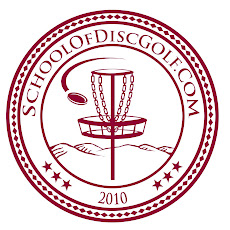Greetings from DeLaveaga Disc Golf Course in Santa Cruz, California. And now, greetings from the DeLaveaga Disc Golf Club as well, as I am serving the club as vice president this year. I've decided to use this forum to report on club happenings in addition to my normal fare of general disc golf topics. I'll try to keep you up-to-date on club happenings as things happen, and pass on stuff of interest I learn at club meetings and elsewhere. So what's up lately? Plenty!
The day of the last meeting (Feb 13th 2008), we met with a City of Santa Cruz parks dept. official who informed us that the City is moving ahead with various improvement projects relate to the course. This despite the fact that Gov. Schwartzenegger vetoed the 'landswap' bill that transferred the land on which our course sits from the National Guard to the city. Obviously
the city is confident that they will get the land eventually. So confident, in fact, that they created elaborate drafting blueprints indicating the changes they plan to make to the parking lot and the
course. On the surface, most of the changes seemed positive to those of us that scanned through them, but changes to the course seem imminent. The good news is that we should have a paved parking lot by the middle of the Summer, and more importantly the city is openly asking for our
feedback to their plans.
Right now we get around 15 people at the club's monthly meetings, and those of us that attend will discuss the pros and cons of the plans, and come to a consensus on how to reply to the city. I have to admit, it's a tremendous responsibility to speak for thethousands of other disc golf enthusiasts that care what happens to our course- especially since we can't be sure we know how the majority feels.
If we could get most of the people who play DeLaveaga to join the club and come to meetings, we'd be in a much better position to ensure that the course remains open and available for everyone to
enjoy. Not only is it extremely important to demonstrate to the city at
every opportunity that we have a large, organized body of city and
county residents (and people from out of town) that strongly support
DeLaveaga Disc Golf Course. If we can get a large body of disc
golfers either coming to the meetings or at least responding to e-mail
questionnaires about the future of the course, we'd be able to more
accurately represent the wishes of the Santa Cruz disc golf community.
THAT'S WHERE YOU COME IN.
DDGC Membership Drive 2008
If
everyone who reads this not only joins the club, but encourages the
other disc golfers they know to also join, we can easily get to where
we need to be numbers-wise. (Hint: One way to spread the word is to
e-mail a link to this blog to every disc golfer you know. Here it is: http://www.santacruzdisc.com/blogs/delablahg.php?title=attention_all_santa_cruz_disc_golfers&more=1&c=1&tb=1&pb=1)
We
think we've made membership pretty affordable this year, with the
option to get some cool club stuff while supporting a good
cause. Here are the membership options:
-Base Membership $10
-Base Membership plus club Bag-Tag $15
-Base Membership, plus club Bag-Tag and cotton membership shirt $25
-Base Membership, plus club Bag-Tag and dri-fit membership shirt $35
We'll
be launching the Membership Drive at the DeLa Monthly on Saturday March
1st @ 9:00 AM. so, you can join the club/renew for 2008 then and get
your shirt, whether you play in the monthly or not. If you can't make
it Saturday, we'll soon have a link on the front page of www.delaveagadiscgolf.com
(look in the upper-left corner) that lets you pay with PayPal and
either pick up your shirt and/or tag at the course, or have it mailed
to you. You can also see pictures of the tags and shirts through that
link as well.
Even if I was not the VP of the club this year, I'd
be writing just as emphatically to you my fellow Santa Cruz disc
golfers to join the club this year and come to meetings. With the
city's involvement and planned changes, 2008 will be the most important
year ever to the future of DeLaveaga Disc Golf course. If you care
about the future of the course, and would also like a voice in that
future, now is the time to join the club and get involved. If you have questions, you can e-mail me directly at deladiscgolf@gmail.com.





